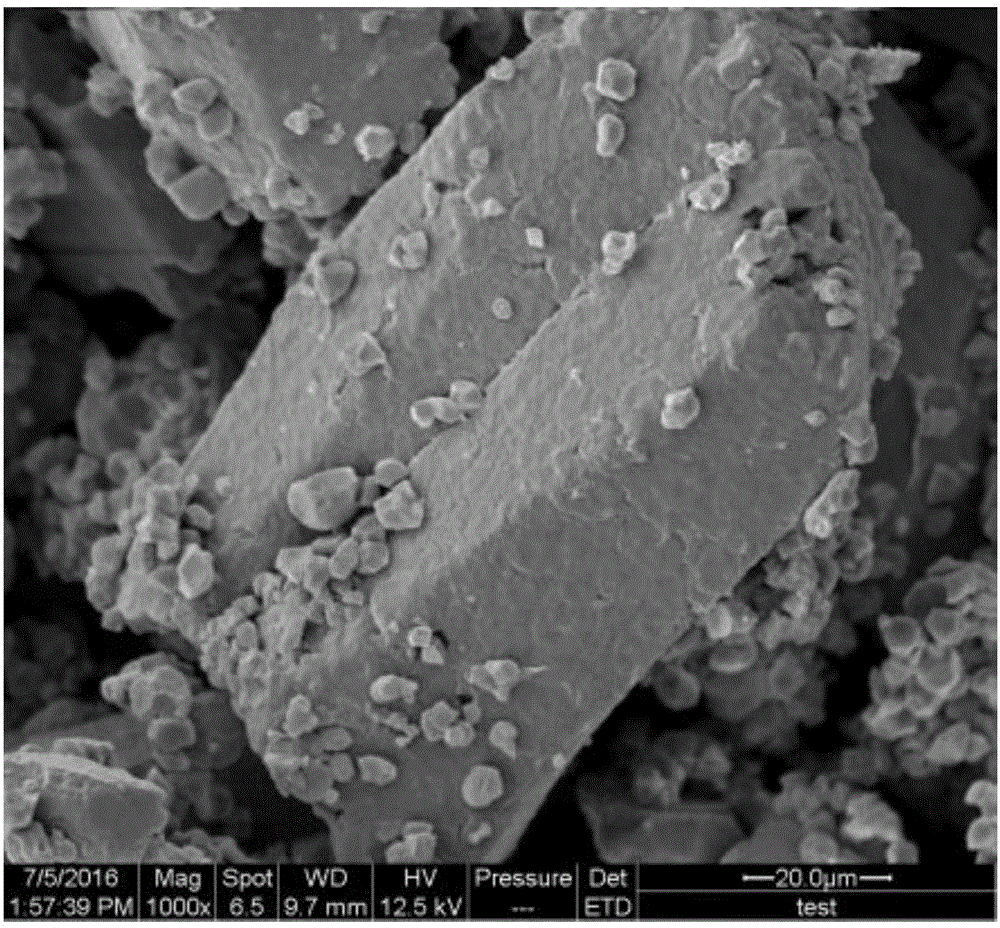Fresh-keeping tomato beef rice and production method for fresh-keeping tomato beef rice
A production method and technology of beef rice, applied in food preservation, food science, application, etc., can solve the problems of low content of animal protein and plant fiber, monotonous taste, lack of elasticity and smoothness, etc., so as to avoid the decline of integrity and compactness , prevent the spread to the outside, and maintain a good flavor effect
- Summary
- Abstract
- Description
- Claims
- Application Information
AI Technical Summary
Problems solved by technology
Method used
Image
Examples
Embodiment 1
[0029] A. Microwave heating: quickly wash the rice with cold water and hot water, drain it and put it in a container, add hot water, and use microwave heating; B. Seal: add hot seasoning material soaking liquid to the mixture obtained in step A , Stir evenly and level, the rice and seasoning materials do not exceed the edge of the container, fill with nitrogen, and seal; C: autoclave: autoclave the sealed rice in a water bath; the seasoning materials in step B include dehydrated tomatoes The ratio of raw materials to grains, dehydrated beef diced and salt is 150 parts by mass of rice, 1 part of dehydrated tomato diced, 1 part of dehydrated beef diced, and 1 part of salt.
[0030] In the step C, a film sealing machine is used to fill the rice with nitrogen to seal the film, and the temperature of the film sealing machine is 150°C.
[0031] In step D, a water bath sterilization method is adopted for the sealed box in the sterilizer, and the steps include a water injection step, a hea...
Embodiment 2
[0041] The difference from Example 1 is:
[0042] The raw material material ratio is 60 parts by mass of rice, 10 parts of dehydrated tomato diced, 20 parts of dehydrated beef diced, and 4 parts of salt.
[0043] The microwave power of the microwave heating in step B is 6.5kw, and the time is 120s.
[0044] In the step A, the weight ratio of the original weight of rice to the water in the system after adding hot water is 1:1.
[0045] In the step C, the ratio of the original weight of rice in the system after the hot seasoning material soaking liquid is supplemented to the sum of the weight of the water and the seasoning material soaking liquid is 1:2.0.
[0046] The preparation method of the seasoning material soaking liquid described in step C is: soak the seasoning material in hot water above 60°C, keep it at 60°C or higher for 3.0 hours, and heat to 90°C during use to combine the solids in the soaking liquid with The liquid is added to the mixture obtained in step A together.
[004...
Embodiment 3
[0051] A. Microwave heating: quickly wash the rice with cold water and hot water, drain it and put it in a container, add hot water, and use microwave heating; B. Seal: add hot seasoning material soaking liquid to the mixture obtained in step A , Stir evenly and spread the rice flat, the rice does not exceed the edge of the container, fill with nitrogen, and seal; C: autoclave: sterilize the sealed rice in a water bath at high temperature and high pressure; the ratio of raw materials to material is 90 parts by mass Servings, 5 portions of dehydrated tomato diced, 10 portions of dehydrated beef diced, 3 portions of salt.
[0052] In the step C, a film sealing machine is used to fill the rice with nitrogen to seal the film, and the temperature of the film sealing machine is 190°C.
[0053] In step D, a water bath sterilization method is adopted for the sealed box in the sterilizer, and the steps include a water injection step, a heating step, a heat preservation step, a hot water rec...
PUM
| Property | Measurement | Unit |
|---|---|---|
| Particle size | aaaaa | aaaaa |
| Particle size | aaaaa | aaaaa |
| Particle size | aaaaa | aaaaa |
Abstract
Description
Claims
Application Information
 Login to View More
Login to View More - R&D
- Intellectual Property
- Life Sciences
- Materials
- Tech Scout
- Unparalleled Data Quality
- Higher Quality Content
- 60% Fewer Hallucinations
Browse by: Latest US Patents, China's latest patents, Technical Efficacy Thesaurus, Application Domain, Technology Topic, Popular Technical Reports.
© 2025 PatSnap. All rights reserved.Legal|Privacy policy|Modern Slavery Act Transparency Statement|Sitemap|About US| Contact US: help@patsnap.com



